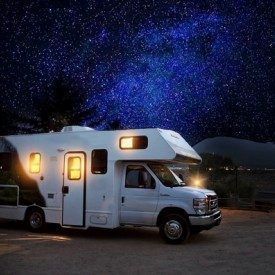The U.S. Bureau of Economic Analysis on Tuesday released its annual report on the outdoor recreation’s impact on the U.S. economy today. Despite a very tumultuous year in 2020 caused by COVID-19, outdoor recreation still generated $688 billion in economic output and employed 4.3 million people, or 3 percent of the workforce.
Those findings are based on national and state level data.
2020’s figures are actually down a bit from the previous year, when the output was $788 billion and the industry provided 5.2 million jobs, according to Jessica Turner, president of the Outdoor Recreation Roundtable, a coalition of some 35 groups vested in the outdoor recreation industry in one way or another, including RVIA and RVDA.
Turner cited another report that had previously found that before 2020, the outdoor sector was growing faster than the economy as a whole in every single indicator. But then the pandemic hit, and another report showed that the outdoor recreation industry was the second-most impacted industry, behind only food and hospitality.
That it still ended 2020 with $688 billion in economic impact shows the vitality and resilience of the outdoor rec industry, particularly certain segments such as RVing, boating and camping, Turner told an audience of industry reps and interested media during a Zoom call Tuesday morning.
Further findings from this latest BEA study include:
- Industry segments like boating and fishing, biking, camping and RVing, hunting and shooting sports, and powersports experienced record sales and unprecedented growth.
- The “Transportation and Warehousing” category decreased 62.37% from 2019 to 2020.
- Declines in travel and tourism had an outsized impact on outdoor recreation’s overall economic activity and related outdoor segments may continue to struggle.
- Outdoor participation soared, especially close-to-home recreation, highlighting the importance of better access to the outdoors for all communities.
- Americans’ prioritization of outdoor recreation continues into 2021 with strong numbers in participation and sales data.
“Despite the pandemic, public lands and water closures, canceled trips and travel, gathering restrictions, supply chain issues and more, the outdoor recreation economy is a huge contributor to national and local economies,” said Turner, president of the Outdoor Recreation Roundtable (ORR). “This data, along with what we have seen throughout the past year and a half, proves how vital continued investments in our public lands and waters and recreation infrastructure are to the national and local economies and how communities big and small, rural and urban, benefit from outdoor recreation.”
“COVID-19 inspired huge participation growth in 2020, as outdoor spaces became places of refuge to safely socialize, improve physical and mental health, connect with family and recover from screen fatigue,” added Lise Aangeenbrug, executive director of the Outdoor Industry Association. “In 2020, 53 percent of Americans ages 6 and over participated in outdoor recreation at least once, the highest participation rate on record. Remarkably, 7.1 million more Americans participated in outdoor recreation in 2020 than in the year prior. Early indications are this trend continued into 2021 and sales data comparing August 2020 to August 2021 show that the sales of tents, backpacks, coolers and camping equipment, trail running shoes, and other outdoor gear are up more than 20 percent year over year.”
RV Industry Association Vice President of Government Affairs Jay Landers had these comments on the BEA report: “2020 was a challenging year for everyone, and the outdoor recreation industry was no exception. Even with the incredible number of people turning to RVs and outdoor recreation in 2020, it was impossible to overcome the economic losses resulting from the entire US economy coming to a screeching halt in the spring of 2020, including closed campgrounds and suspended operations at RV dealerships and RV manufacturing plants. The good news is that nearly 20 percent more RVs will be built in 2021 than in any prior year and the streak is expected to continue into 2022. This bodes well for the future of not only the RV industry but the wider outdoor recreation economy as a whole.”
This is the fourth consecutive year that BEA, an agency of the U.S. Department of Commerce, has released government data on the outdoor recreation industry sector.
